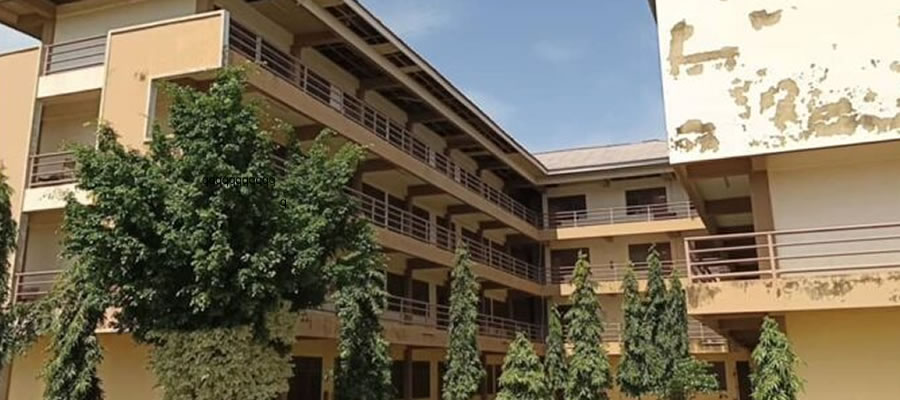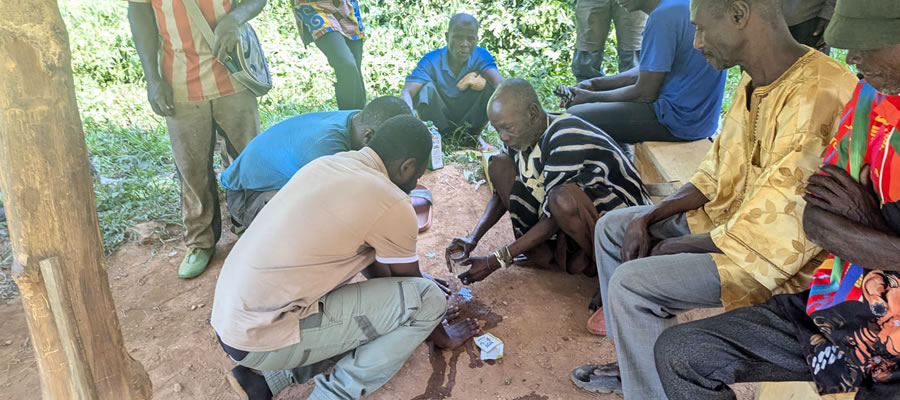

Nkwanta South Municipal had a total population of 41,723 in 1970, 84,544 in 1984 and 153,276 in 2000 The Municipality has experienced steady growth over the years. The Muncipality population growth rate of 3.0 is higher than that of the Region which is 1.9 and the country 2. This high growth rate is attributed to the high fertility rate of 4.4% among womeThe population density expresses the level of pressure the mere size of population exerts on land. The increasing density therefore shows the increasing pressure on land and its resources. Nkwanta South Municipal has a relatively low population density even though there is marked increase over the years.
The last three decades have witnessed two factors which have accelerated the growth of population in the district. The first was the significant migration from the southern Volta Region especially N from the Tongu District to take advantage"&f the fishing opportunities provided by the newly formed Volta Lake. Accompanying elements in this inflow of population were artisans and farmers attracted by abundant and sparsely populated farmlands. The second factor in accelerating population growth in the district was the designation of Nkwanta as a District Administrative Centre. The administrative and other service centers that have been established have served as stimuli to population growth in Nkwanta South Municipal and other settlements.
Since 1981, ethnic conflicts in the Northern Region with spillover effects in the Nkwanta South Municipal it may also have caused an inflow of population contributing thereby to the overall significant growth of the population in the Municipality. Nkwanta South Municipal basically is a rural district with over 76% of the population living in rural areas and in scattered settlements. One major constraint to economic and social development of these areas is that most of the settlements lack the threshold population required for the effective and economical provision of services and facilities.
The information on the sex composition and the age structure of the population of the district serves as a useful guide to demographic trends in the district. The age structure can be broken down broadly into categories of 0 - 14 years representing the young dependent population, 15-64 representing the non-dependent population and 65 years and older representing the old age dependent population.
For the 2000 census, the proportion of the district population of aged 0-14 years was 47.3 percent as compared to the regional average of 41.1 percent. The proportion for 0-4 years of age group for the district was 19.1 percent while all other districts in the region recorded proportion between 12.0 - 15.0 percent. Population with high birth rates normally have a younger age composition as is the case of Nkwanta, than those with lower birth rates. It is clear from the structure that the district still has a high fertility regime (4.4%) and that the need to continue to educate couples to adopt low fertility life style is worth supporting For the region as a whole, the dependency ratio is 91.8% made of 12.7 for old dependency and 79.1 child dependency compared with Nkwanta South which has 107.2, which incidentally happens to be the highest in the region.
What this means is that Nkwanta South Sohas more than one dependant per working population. The 2000 population and Housing Census recorded 18.971 houses in the Nkwanta South Municipal. This is 7.2% of the total number of houses recorded in the Volta Region (264,451). The same census also recorded 24,499 households in the district. The average household size for the district is six (6) and that of the region is 4.7. the most common roofing material in the district: This is dommon mostly in the rural areas of the district. There is the need to create fire belts around these buildings since bush fires in the district are a regular phenomenon
Date Created : 11/23/2017 6:59:18 AM












 facebook
facebook
 twitter
twitter
 Youtube
Youtube
 +233 593 831 280
+233 593 831 280 0800 430 430
0800 430 430 GPS: GE-231-4383
GPS: GE-231-4383 info@ghanadistricts.com
info@ghanadistricts.com Box GP1044, Accra, Ghana
Box GP1044, Accra, Ghana